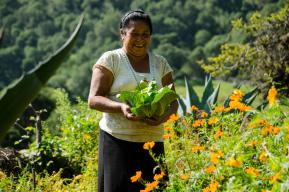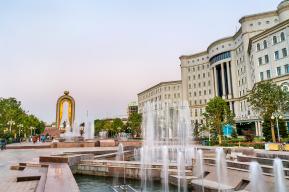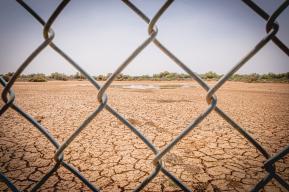These seven biosphere reserves are the Seaflower Biosphere Reserve (Colombia), Guanahacabibes Peninsula Biosphere Reserve (Cuba), Macizo del Cajas Biosphere Reserve (Ecuador), La Encrucijada Biosphere Reserve (Mexico), Darien Biosphere Reserve (Panama) and Noroeste Amotapes-Manglares Biosphere Reserve (Peru).
The project is being supported by more than US$1 million in Flemish funds in trust.
Moreover, the Xirihualtique-Jiquilisco Biosphere Reserve in El Salvador will be able to take part in reforestation efforts within the same project, thanks to support from the Spanish National Parks Autonomous Agency.
Latin America and the Caribbean are home to about 26% of the world’s mangrove forests but their expanse is shrinking rapidly as a consequence of habitat fragmentation and overexploitation. Even though the potential for restoration is particularly high in this part of the world, mangrove conservation and restoration are currently underfunded in the region. That is why UNESCO has stepped in.
Working with communities to restore their mangroves
‘UNESCO has found community-based ecological mangrove restoration to be a successful strategy for halting and reversing mangrove loss,' observes Maria Rosa Cadenas, an Associate Programme Specialist at UNESCO. ‘In Latin America and the Caribbean, healthy mangroves are a precious resource for indigenous peoples and local communities, including afro-descendants. Healthy mangroves provide them with a source of food and serve as a natural buffer against hurricanes, storms and floods. They also provide habitat for various species of bird, reptile and amphibian and, thereby, generate employment through ecotourism’.
UNESCO will be working with these local communities and with local management committees in the participating biosphere reserves to restore their mangrove forests. Education will be a strong component of the project; young people will be involved in the project to support implementation within their own communities. The project will also strengthen grassroots networks as a means of raising awareness and developing skills to facilitate collective action.
A savvy mix of local community knowledge and scientific expertise
Mangrove forests have a remarkable capacity to regenerate under the right conditions. The greatest challenge will be to ensure sound planning. That will entail combining local community knowledge and scientific expertise from the outset.
In the first phase, the project will identify the root causes of mangrove loss and mitigate the risk of future losses. This will require a detailed understanding of the socio-economic conditions affecting the mangrove forests. Technical workshops will be organized at the local level to determine what threats the mangrove forests face and how their restoration will affect communities.
For instance, one major threat facing the La Encrucijada Biosphere Reserve in Mexico is the African palm (Elaeis guineensis). At the project launch in September, several scientists volunteered their support for the biosphere reserve's efforts to control this invasive species.
It is planned to hold an international workshop in Colombia in March 2023 to give biosphere reserve managers and international scientists an opportunity to fill any gaps in the initial assessment and map the exact locations for future restoration work and related challenges.
In parallel, the project will identify which species of mangroves can be re-introduced and where these can be re-planted and restored in an ecological manner. It will be crucial to initiate a cycle of natural regeneration that can be sustained over the long term, in order to provide local communities with sustainable economic opportunities. This, in turn, should strengthen the bond between people and nature.
Mangrove decline: a global phenomenon
Since 1980, nearly all regions have experienced extensive losses of mangrove area. Some countries have lost more than 40% over a 25-year period. Mangrove forests currently cover an estimated 152,000 km2, about the size of Bangladesh.
Mangrove forests around the world are still being degraded or lost at alarming rates, even though they are a valuable source of food security – mangrove forests support local fisheries by serving as fish nurseries –, timber and livelihoods for local communities, while providing a natural coastal defence.
Mangroves: the first line of defence against climate change
Over the coming decades, low-lying coastal communities will be particularly vulnerable to sea-level rise as a consequence of climate change. This is likely to increase the frequency of flooding and accelerate erosion. By raising the water table, climate change will increase saltwater intrusion on land and in underground aquifers, affecting agriculture and water supplies. By breaking the waves, mangrove forests protect against coastal erosion and storm surges. A 500-metre strip of mangroves can reduce the height of waves by 50–90%.
Mangrove forests mitigate the impact of climate change in other ways. They are highly efficient carbon sinks. One hectare of mangrove can store 3,754 tons of carbon. That is the equivalent of taking 2,651 cars off the road for an entire year!












